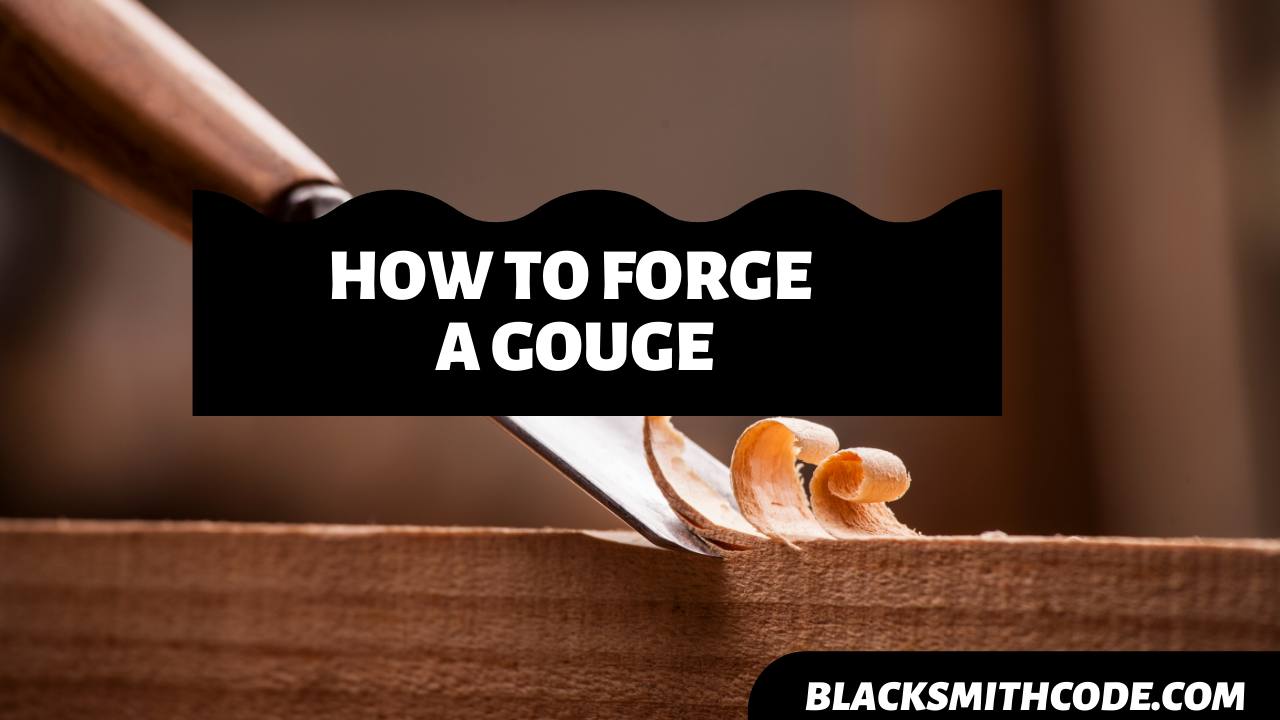Do you know you can forge different kinds of chisels? You might want to try forging a different type of chisel by learning how to forge a gouge in this guide.
The gouge is a type of chisel that has a concave blade which appears U-shaped cross-sectionally. It is useful in sculpturing, carpentry, and even surgery. The gouge is a prevalent and widely used type of chisel. It is mostly used to produce concave surfaces.
Many blacksmiths have tried forging a gouge, and they have accomplished the task. They were able to achieve this task because they followed specific steps and procedures. These steps and procedures made their forging quick and easy.
The specific procedures and steps needed to forge a gouge have been provided in this article.
Instructions on How to Forge a Gouge
Step 1: Get a Rectangular Steel Rod
To forge a gouge, you need to have a small piece of steel. The steel piece should be about a quarter-inch thick, two and a half inches long, and a half-inch wide. You can also get a larger piece of steel and cut it to size or use it like that if you intend to forge a large gouge.
Step 2: Heat the Steel Rod
You need to heat the steel rod because you will do a lot of forging, to make the forging easier, you have to heat it to a malleable state. Place the rod in a forge and heat it above the critical temperature.
Heating the steel will take a while, so you should exercise patience or get something to do. However, it would help if you did not go far away from the forge to pay attention.
Step 3: Beat the Steel into Shape
You will have to make use of your hammer to carry out this step. You are going to forge the hot steel rod into the form of a gouge. To forge the hot steel into shape, you should;
Quick Steps
- Retrieve the steel rod from the forge.
- After removing it from the forge, place it on an anvil and hold it with a crucible or plier but not with your bare hands.
- Get your hammer. You should make use of a medium-sized hammer to beat the steel into shape.
- Beat the metal with the hammer till it takes the form of a gouge (a chisel-like shape).
- You should be creative when beating the steel into the shape of a gouge.
Step 4: Bevel a Part
After beating the steel into the shape of a gouge, you should place the rough gouge on an anvil and angle a part of the blade. Beveling beautifies the edge as well as add some touch of professionalism to it.
It would help if you beveled the blade in your desired way. You might decide to bevel it from the sides to the top. Be careful not to disrupt the structure of the gouge.
Step 5: Shape the Handle and Blade
You can now shape the handle and the blade of the gouge. You can make use of any design you want your blade or handle to take after. Also, you have to be creative when shaping the handle.
Pro Tip
You wouldn’t like a conventional or universal design for your gouge. You should make use of an outstanding design that sets your gouge apart from every other one.
Step 6: Reheating
Reheat the gouge after completing the forging procedures.
To reheat, you should place the steel in a forge and heat it till it becomes very hot. After becoming hot, you should remove it from the forge and proceed to quench.
Step 7: Quenching
After reheating, quenching is the next step to take, to quench your hot metal, you should place it in a quench liquid to cool. You can either place it in oil or water because both are suitable quench liquids.
Reheating and quenching help harden and strengthens the gouge. You should ensure your heat and quench the gouge completely.
FAQs on How to Forge a Gouge
Question
Do gouges have a metallic handle?
The handle your gouge takes depends on your taste for the handle. You might prefer a wooden handle to a metallic handle; you might also prefer a metallic handle to a ceramic handle. Your gouge can have the grasp of your desired material.
Question
Can I forge the blade of the gouge from a wood?
If you are making the blade of your gouge from wood, you are carving and not forging. Blacksmiths forge while sculptors carve. It is ideal to forge the blade of your gouge from metals and not from wood.
Question
What is the best material to forge a gouge?
Considering a lot of factors, the best material to forge a gouge from is the steel. The steel has good forging properties making it suitable for forging a gouge. Iron, aluminum, and other metals are good for forging, but the steel has an overall rating for forging.
Video
Warnings
There are safety precautions that will guide you to safety when forging. You should follow these safety precautions to keep yourself safe from hazards. Here is a list of safety precautions you should follow: Always place the iron in a forge using a crucible.
Do not handle hot substances with your bare hands.
Make use of the appropriate tool for each task.
Do not make use of a damaged tool.
Beware of fire outbreak.
Make sure you wear the appropriate clothing while forging.





